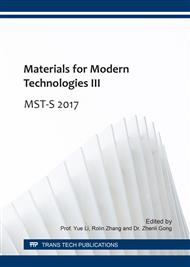p.120
p.128
p.134
p.141
p.148
p.155
p.162
p.167
p.175
Dynamics of Bed for Regeneration of Cerium Oxide High-Temperature Coal Gas Desulfurization Sorbent
Abstract:
The dynamic behavior of bed for regeneration of cerium oxide high temperature gas desulfurization sorbent under the atmosphere of O2 was investigated in the fixed bed micro-reactor. O2 concentration during the regeneration can be detected by an oxygen analyzer, and the sulfur content of sorbent in the bed was test using sulfur analyzer. The effects of O2 concentration, regeneration temperature on the dynamic behavior of bed for regeneration of CeO2 desulfurization sorbent were discussed. According to the experimental results, the length and movement speed of regeneration zone are calculated. The results showed that the increase of O2 concentration in inlet gas obviously improves the movement speed of regeneration zone in bed for CeO2 desulfurization sorbent, and the increase of regeneration temperature can decreased the length of the regeneration zone and improved the movement speed of the regeneration zone. The increase of regeneration temperature had a better effect on the improvement of bed utilization of sorbent than that of O2 concentration.
Info:
Periodical:
Pages:
148-154
Citation:
Online since:
March 2017
Authors:
Keywords:
Price:
Сopyright:
© 2017 Trans Tech Publications Ltd. All Rights Reserved
Share:
Citation:


